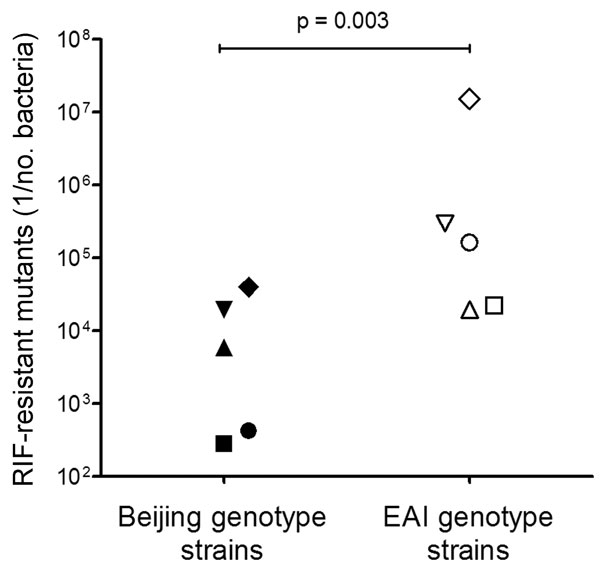Volume 18, Number 4—April 2012
Dispatch
Drug Susceptibility of Mycobacterium tuberculosis Beijing Genotype and Association with MDR TB
Figure 1

Figure 1. Frequency of rifampin (RIF)-resistant mutants in Mycobacterium tuberculosis Beijing and East-African/Indian (EAI) genotype strains (5 strains each) originating from Vietnam. Mutation frequencies were determined in duplicate. Statistical analysis was performed by using an unpaired Mann-Whitney test.
Page created: March 15, 2012
Page updated: March 15, 2012
Page reviewed: March 15, 2012
The conclusions, findings, and opinions expressed by authors contributing to this journal do not necessarily reflect the official position of the U.S. Department of Health and Human Services, the Public Health Service, the Centers for Disease Control and Prevention, or the authors' affiliated institutions. Use of trade names is for identification only and does not imply endorsement by any of the groups named above.